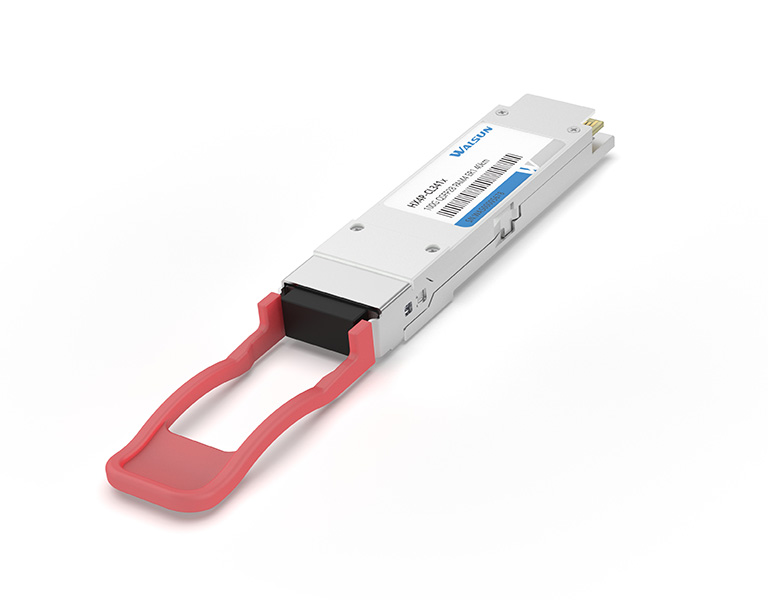

 Knowledge Base +
Knowledge Base +  2024.01.05
2024.01.05QSFP28 and 100G QSFP are both types of high-speed, multi-lane transceivers used in networking equipment for communication over optical fiber. The main difference between the two lies in their data transfer rates and application.
QSFP28 is a module that supports data rates of up to 28 gigabits per second (Gbps) per lane, making it suitable for 100GbE (Gigabit Ethernet) and 32G Fibre Channel applications. It has a total data transfer rate of 100Gbps when all four lanes are used.
On the other hand, 100G QSFP supports a data rate of 25Gbps per lane, making it suitable for 100GbE applications. It also has a total data transfer rate of 100Gbps when all four lanes are used, but it uses different signaling technology compared to QSFP28.
In summary, QSFP28 and 100G QSFP both support 100Gbps of total data transfer rate, but they differ in their individual lane speeds and signaling technologies.
First of all, let's take a look at the advantages of 100GQSFP28 optical modules:
1: port density
The first generation of 100G optical modules is a very large CFP optical module, followed by CFP2 and CFP4 optical modules, of which CFP4 optical modules are currently the latest generation of 100G optical modules, the width of which is only 1/4 of the CFP optical module.The packaging style of the QSFP28 optical module is smaller than that of the CFP4 optical module, which means that the QSFP28 optical module has a higher port density on the switch.
2: Power Consumption
The power consumption of QSFP28 optical modules is usually less than 3.5W, while the power consumption of other 100G optical modules is usually between 6W and 24W. Thus, QSFP28 optical modules consume much less power than other 100G optical modules.
3: Cost
Today's data centers are mainly 10G network architecture, the interconnection solution is mainly 10GBASE-SR optical modules and duplex LC multimode fiber patch cords, if the existing 10G network architecture based on the direct upgrade to 40/100G network will save a lot of time and cost.
What is the difference between 100GQSFP28PSM4 optical module and QSFP28CWDM4 optical module?
I: 100GQSFP28PSM4 Optical Module Overview

1: QSFP28PSM4 optical module is a high-speed, low-power product with a hot-swappable QSFP form factor, built-in digital diagnostics, and eight optical fibers, each with a data rate of 25Gbps;
2: QSFP28PSM4 optical module adopts 12-channel MTP interface, and at the same time, it realizes bidirectional 100G transmission with 8 optical fibers;
3: Although the QSFP28PSM4 optical module runs in a single-mode fiber, its cabling structure is the same as that of the QSFP28SR4 optical module. Without changing the existing cabling structure, the use of QSFP28PSM4 optical modules can save the conversion cost between multimode and single-mode.
4: The working principle of QSFP28PSM4 optical module is almost the same as that of QSFP28SR4 optical module. The difference is that QSFP28PSM4 optical module works on single-mode fiber, while QSFP28SR4 optical module operates on OM4 multimode fiber.
II: Overview of QSFP28CWDM4 Optical Module
100GCWDM4 is also a multi-source protocol (MSA). 100GCWDM4 optical module introduces WDM technology and adopts a duplex LC interface, which can reach a transmission distance of 2km when used with single-mode fiber.
The 100GQSFP28CWDM4 optical module has a transmission rate of 103.1Gbp and is mainly used in computing, high-frequency trading, etc. Its cost is significantly higher than that of the QSFP28PSM4 optical module. Through Coarse Wavelength Division Multiplexing (CWDM) technology, the QSFP28CWDM4 optical module multiplexes four wavelengths, 1270nm, 1290nm, 1310nm and 1330nm, into a single-mode fiber for transmission.
Optical Module Packaging
100GQSFP28CWDM4 optical module adopts the optical module package is QSFP28, it is a kind of optical module that can be used to support 100G transmission, which provides an ideal solution for the demand of increasing transmission rate in the current ultra-large data center, the package size of the QSFP28 optical module is smaller than that of the CFP4 optical module, which means that the QSFP28 optical module in the ** machine with higher port density.

Digital Diagnostic Function
100GQSFP28CWDM4 optical module has built-in digital diagnostic function, which can effectively monitor the optical module transmit optical power, receive optical power, temperature, power supply voltage, laser bias current and warning messages and other important performance parameters.
Cost
100GQSFP28CWDM4 optical module can be directly upgraded from 25G to 100G without 40G, which greatly reduces the cost of cabling system.
Subscribe to the newsletter
for all the latest updates.
2-5# Building, Tongfuyu Industrial Zone, Aiqun Road, Shiyan Street, Baoan District, Shenzhen. China
